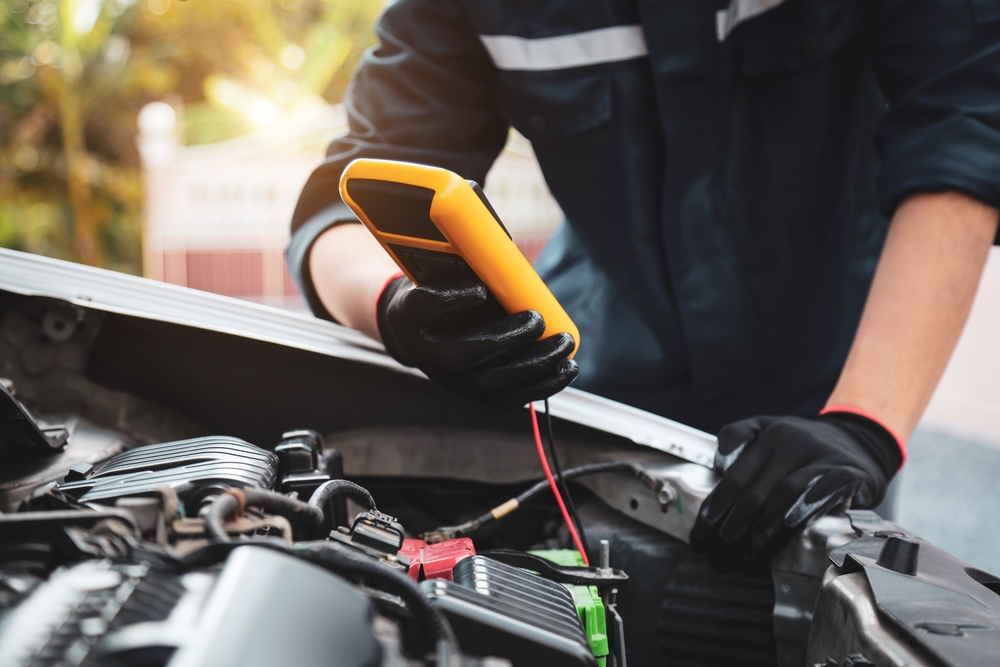
How do I Test a Deep Cycle AGM Battery vs a Starting Battery?
August 29, 2024 9:16 pm Leave your thoughtsWhen maintaining and optimizing the performance of vehicles, marine equipment, or renewable energy systems, understanding how to test different types of batteries is essential. Deep Cycle AGM (Absorbent Glass Mat) batteries and Starting batteries are two common types, each with distinct roles and testing methods. This detailed guide will walk you through the testing procedures for each type of battery, highlighting their differences and providing tips for proper maintenance.
The Basics of Deep Cycle AGM and Starting Batteries
What is a Deep Cycle AGM Battery?
A Deep Cycle AGM battery is designed to provide a steady, reliable source of power over extended periods. Unlike traditional batteries that offer short bursts of energy, Deep Cycle AGM batteries are engineered to handle deep discharges and prolonged use without suffering damage. These batteries are commonly used in applications requiring consistent energy output, such as:
- Marine Systems: Powering trolling motors, fish finders, and onboard electronics.
- RV Systems: Operating appliances, lighting, and other electrical systems when not connected to shore power.
- Solar Energy Systems: Storing energy generated from solar panels for later use.
AGM batteries use a fiberglass mat soaked in electrolyte, which helps prevent spillage and allows for more efficient energy storage. Their construction supports frequent charging and discharging, making them ideal for these applications.
What is a Starting Battery?
A Starting battery, also known as a cranking battery, is specifically designed to provide a high burst of power to start an engine. This type of battery is characterized by:
- High Cranking Power: It can deliver a large amount of current in a short time to turn over the engine.
- Shallow Discharge Cycles: Starting batteries are not designed for deep discharges and should remain relatively full for optimal performance.
- Construction: It typically features thin lead plates that maximize surface area and facilitate rapid current flow.
Starting batteries are commonly found in vehicles like cars, trucks, motorcycles, and boats. They work in conjunction with the alternator, which recharges the battery while the engine is running.
Key Differences Between Deep Cycle AGM and Starting Batteries
Purpose
- Deep Cycle AGM Battery: Intended for sustained energy output. It provides a steady current over a longer duration, ideal for applications that require continuous power.
- Starting Battery: Designed for short bursts of high current to start an engine. It is optimized for delivering a quick surge of electricity.
Construction
- Deep Cycle AGM Battery: Features thicker plates and more active material, allowing it to withstand deep discharges and frequent cycling.
- Starting Battery: Has thinner plates to maximize current flow for quick starts, but is not built to handle deep discharges.
Discharge Characteristics
- Deep Cycle AGM Battery: Can be discharged to a lower state of charge (often up to 20%) without significant damage.
- Starting Battery: Should not be deeply discharged. Prolonged low charge levels can significantly reduce its lifespan.
Testing a Deep Cycle AGM Battery
Tools You Will Need
- Multimeter: Measures voltage and helps determine the state of charge.
- Hydrometer (if applicable): Assesses the specific gravity of the electrolyte for traditional AGM batteries with removable caps.
- Load Tester: Evaluates the battery’s ability to hold a charge under a simulated load.
Step-by-Step Testing
1. Check the Voltage
Begin by measuring the voltage of the Deep Cycle AGM battery with a multimeter. A fully charged AGM battery should display a voltage reading of approximately 12.7 to 13.0 volts. If the voltage is lower, the battery may be undercharged, which can affect its performance.
2. Measure the State of Charge
Consult the manufacturer’s specifications for the ideal voltage range. A reading below 12.4 volts usually indicates that the battery needs charging. If the battery’s voltage consistently falls below this threshold, it might be a sign of a deeper issue such as sulfation or damage.
3. Perform a Load Test
Connect the load tester to the battery and apply a load equal to about half of the battery’s Cold Cranking Amps (CCA) rating. Monitor the voltage during the load test. A healthy Deep Cycle AGM battery should maintain a voltage above 10.5 volts under load. If the voltage drops significantly, the battery might be failing or approaching the end of its usable life.
4. Check the Specific Gravity (if applicable)
For AGM batteries with removable caps, use a hydrometer to measure the specific gravity of the electrolyte. Compare the readings to the manufacturer’s guidelines. A significant deviation might indicate an issue with the battery’s internal components.
Testing a Starting Battery
Tools You Will Need
- Multimeter: To measure the voltage and assess the battery’s charge level.
- Load Tester: To evaluate the battery’s performance under load conditions.
- Battery Charger: To ensure the battery is fully charged before testing.
Step-by-Step Testing
1. Check the Voltage
Measure the starting battery’s voltage with a multimeter. A fully charged Starting battery should read approximately 12.6 to 12.8 volts. A significantly lower voltage reading could indicate that the battery is undercharged or has reduced capacity.
2. Test the Battery Under Load
Attach the load tester to the battery. Apply a load equal to about half of the battery’s CCA rating for around 10-15 seconds. During this time, monitor the voltage. A good Starting battery should maintain a voltage above 9.6 volts under load. If the voltage drops below this level, the battery might be weak or failing.
3. Check for Cranking Performance
For vehicles, observe how the engine cranks. If the engine cranks slowly or fails to start, it may be a sign that the battery is not providing sufficient power. This is especially relevant in cold weather, which can further strain the battery.
Common Issues and Troubleshooting
Deep Cycle AGM Battery Issues
- Low Voltage: Could be due to undercharging, sulfation, or internal damage. Regularly charging the battery and avoiding deep discharges can help prevent this issue.
- Inconsistent Power Output: May indicate internal damage or degradation. Regular load testing can help detect these issues early.
- Shortened Battery Life: Often caused by deep discharges, overcharging, or exposure to extreme temperatures. Follow manufacturer guidelines for charging and storage to extend battery life.
Starting Battery Issues
- Difficulty Starting the Engine: Usually a sign of a weak or failing battery. Check the voltage and perform a load test to confirm.
- Rapid Voltage Drop Under Load: Indicates the battery is not holding a charge properly. This may be due to age or internal damage.
- Sulfation: Can occur from long periods of inactivity or incomplete charging. Regular maintenance and charging can help mitigate sulfation.
Maintenance Tips
For Deep Cycle AGM Batteries
- Regular Charging: Keep the battery charged to prevent sulfation and maintain performance. Use a smart charger designed for AGM batteries for optimal results.
- Avoid Deep Discharges: Try to keep the battery charge above 20% of its total capacity to prolong its lifespan.
- Proper Storage: Store the battery in a cool, dry place. If storing for an extended period, keep it fully charged and check its charge level regularly.
For Starting Batteries
- Regular Testing: Periodically check the voltage and performance of the battery to ensure it is functioning properly.
- Keep Clean: Ensure that the battery terminals are clean and free from corrosion. Use a battery terminal cleaner or a mixture of baking soda and water to clean the terminals if necessary.
- Charge Regularly: Keep the battery fully charged, especially if the vehicle is not used frequently. Use a battery maintainer or trickle charger if needed.
Conclusion
Testing and maintaining Deep Cycle AGM batteries and Starting batteries require different approaches due to their unique characteristics and intended uses. By following the appropriate testing procedures and understanding the differences between these battery types, you can ensure optimal performance and extend their lifespan.
Deep Cycle AGM batteries are designed for sustained energy output, making them ideal for applications requiring consistent power. In contrast, Starting batteries provide high bursts of energy for starting engines and should be kept charged and in good condition for reliable performance.
Regular testing, proper maintenance, and addressing issues promptly will help you avoid unexpected problems and keep your vehicle, marine equipment, or energy system running smoothly. For more detailed information on battery testing and maintenance, consider consulting with a professional technician or exploring additional resources related to battery care and management.
Need a Battery Store in Houston, TX?
At Texford Battery Co, we pride ourselves on being much more than just another battery specialist. We credit our seven decades of business growth and success to the unmatched service and expertise our team provides. Texford Battery Co is not simply a supplier – we helped pave the way for many innovations in the battery distribution industry that continue to keep prices competitive for our customers. Among them, we were a leader in the creation of the Battery Marketing Group in the 1970s. As a founding member of this national network of battery distributors and manufacturers, we are able to offer up to 10,000 of the industry’s top products to our customers at the lowest cost. Call us today!
Categorised in: Battery Testing, Car Batteries
This post was written by admin
